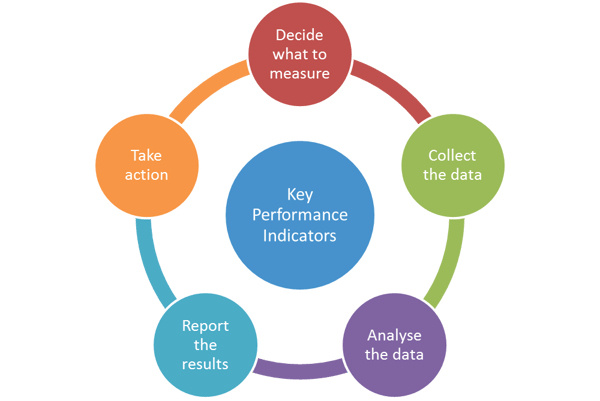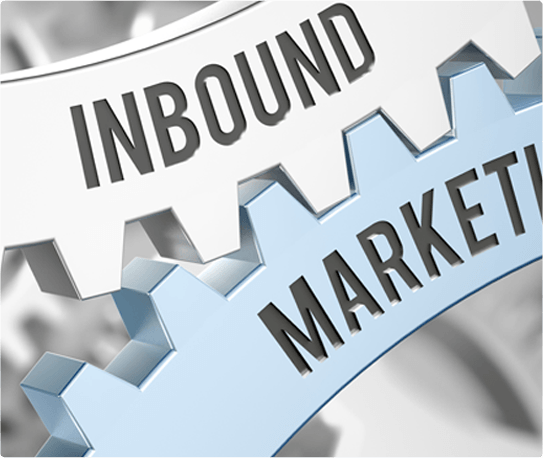
What is ‘KPI’ in digital marketing? If you’ve been brushing up on your digital marketing terminology, there is a good chance that you have seen the term “KPI.”
It’s one of the most critical aspects of optimizing your digital marketing efforts and a key piece of every plan that we put together here at RiseFuel.
A KPI is a Key Performance Indicator. A Key Performance Indicator is a measurable value or metric that shows a company how well it is achieving its business objectives.
They are the most important metrics that your company uses to measure your success, both in marketing and in other areas of your business.
Whether you realize it or not, there is a good chance you are already using KPIs to measure the effectiveness of your business in several key areas — even if you didn’t already know what the term stood for.
High-level KPIs generally focus on the overall performance of your business, while low-level KPIs focus more on the specific processes and objectives within departments.
For example, a KPI for your sales team might be “calls per day,” helping you to monitor how much outreach your sales department is conducting.
Why Are KPIs Effective Tools for Your Company?

KPIs are a critical tool for every inbound marketing campaign that I put together, but they are only as valuable as the actions that they inspire you to take.
Adopting industry-standard KPIs for measuring your business won’t do you much good if you don’t use them as a gauge for further action that will benefit your business. KPIs must inspire positive change to be an effective tool.
To use KPIs effectively within your business, you must work closely with your teams to determine what your organizational objectives are.
Don’t let the industry-standard KPIs dictate your goals. Instead, allow your goals to dictate how you go about measuring them. They are communicative in that way. The KPIs that you put focus on signal to your team's what is important for your business.
At RiseFuel, we recommend following the SMART goal setting system when it comes to choosing your KPIs.
SMART outlines a few key considerations that come from setting goals that also apply to KPIs that you may use to track your business.
SMART stands for:
- Specific. Does your business goal apply to a very specific part of your business? Be specific.
- Measurable. Is the goal measurable? Use numbers to identify what a successful outcome would look like for your specific goal.
- Attainable. Is the goal realistic? Shooting too high doesn’t do you any good. Choose goals that are challenging but possible.
- Relevant. Is the goal that you are setting relevant to your larger organizational goals?
- Time-Based. Tie the goal to a specific time frame so that you have an endpoint for the goal and don’t let its completion drag on too long.
If you set business goals following these principles, you’ll be able to choose corresponding KPIs for measuring performance that closely align with your business concerns and put you in a position for success.
In the next section, we’ll go over some of the most popular KPIs that businesses use to monitor the health of their organization and help them to track their goals in some very specific areas of their business.
Work closely with your managers to determine which of these KPIs might be relevant to your company based on your business objectives.
Marketing KPI Examples
There are many KPIs that businesses can use to measure various aspects of their business.
- Sales Revenue
- Cost Per Lead
- Customer Acquisition Cost (CAC)
- Customer Lifetime Value (CLV)
- Customer Churn Rate
- Inbound Marketing ROI
- Traffic-to-Lead Ratio (New Contact Rate)
- Lead-to-Customer Ratio
- Open Customer Support Tickets
- Landing Page Conversion Rates
- Organic Traffic
- Social Media Traffic (and Conversion Rates)
- Mobile Traffic, Leads and Conversion Rates
let's dig into a few examples of the most popular KPI types that we monitor in our digital marketing plans here at RiseFuel:
Sales Revenue
How much money has your company brought in from your inbound marketing campaign?
Knowing how successful your inbound marketing strategy is is important to understand your sales revenue. Every corporation does not want to spend money on something that doesn't generate revenue.
You would most likely move the money to other marketing activities. You must first have a thorough understanding of what you mean by inbound and outbound marketing in order to determine the sales revenue from inbound marketing.
By using the following method, you can measure your sales revenue from inbound marketing.
(Total sales for the year) - (Total revenue from customers acquired through inbound marketing)
Lead-to-Customer Ratio
It is important to know how many leads your sales team will close after all your marketing efforts. You will want to measure both the rate of conversion of your qualified sales leads and the rate of conversion of accepted sales leads.
What's the difference between the two?
Qualified sales leaders are leads that are deemed prepared for sales based on their lead rating and specific activities / triggers they have accomplished.
Many businesses will find a lead filling out a form like "contact a rep" to be a lead ready to buy the service or product.
For example, an apartment management company with a lead filling out the "rent an apartment" form would be considered a lead qualified for sales.
Sales Accepted Leads are simply considered opportunities by the sales team and have either specifically approached the lead or a planned call.
Ask yourself the following questions when looking at these two ratios:
- Is my campaign collecting leads?
- Is our CRM successfully passing qualified leads to sales at the right time?
- Is sales closing at a high rate?
Customer Acquisition Cost (CAC)
In my opinion, Customer Acquisition Cost is one of the most important metrics that any business can track. It can help to inform your marketing campaigns and measure profitability for all of your customer acquisition efforts.
It is popular in the digital world but can apply to any business that spends money to acquire new customers through marketing or sales outreach.
Here is the formula for calculating customer acquisition cost:
Customer Lifetime Value (CLV)
Customer lifetime value is another important metric for informing your marketing and sales efforts. It tells you how much you can expect to earn, on average, over the lifetime of every engagement with a new customer.
CLV helps you to look at the total value of your company from a long-term customer relationship perspective. You can use this KPI to identify your most profitable channels and where you find your best customers.
There are several different types of CLV metrics. The one that you choose will depend on your business type, but here are a few formulas to help get you started:
Organic Traffic
Organic traffic The aim of any company using inbound marketing is to get most of its traffic from organic searching.
High organic traffic means people find your website on their own, minimizing your effort to attract them to your page, but also minimizing the cost.
It should come as no surprise that organic traffic is directly correlated with your SEO strategy, so validate and review this number (along with your keywords) and optimize your SEO strategy accordingly.
Customer Churn Rate
How often are you losing the customers that you acquire? Customer churn rate measures the percentage of customers that either fail to make a repeat purchase from your company or cancel their subscription service.
This is directly tied to the lifetime value of your customers and can help to highlight areas of your business that you need to improve.
Here’s the formula for calculating churn rate, which is pretty simple:
Open Customer Support Tickets
A great example that not all KPIs need to be directly tied to customers and profits. Open customer support tickets is a vital metric for measuring the effectiveness of your customer support team.
Monitoring how many are open, how long they’ve been open, or how often they have to be escalated are all important ways to evaluate your customer service teams.
KPIs Provide Insight and Inform Strategy
Tracking KPIs just for the sake of doing so doesn’t do you any good. KPIs become powerful when they are used to provide insight into your business and inform your strategies and changes moving forward.
When I work with a new client, one of the first things that I do is ask about their business goals and try to connect those goals to the appropriate KPIs that we will use to track and evaluate their success on those fronts.












